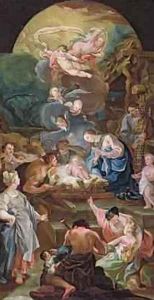Antonio the Elder Gonzalez Velazquez Paintings
Antonio González Velázquez, also known as Antonio the Elder to distinguish him from his descendants who were also painters, was a prominent 18th-century Spanish painter. Born on December 5, 1723, in Madrid, Spain, he was part of a family with strong artistic traditions. His father Pablo González Velázquez and his brothers were also involved in the arts. Antonio was trained by his father and later became a pupil of the French painter Jean Ranc, who influenced his artistic development.
González Velázquez's work is characterized by its baroque style, which evolved into a more rococo aesthetic as his career progressed. He was a versatile artist, adept in painting religious subjects, mythological scenes, and portraits. Throughout his career, he received significant recognition and was appointed as a court painter to King Charles III of Spain. This position allowed him to work on various projects, including decorating the Royal Palace of Madrid and other royal sites.
His contributions to art extend beyond his painting, as he played a crucial role in the foundation of the Royal Academy of Fine Arts of San Fernando in 1752 and later served as its director. This institution was vital in the promotion of neoclassicism in Spain and the modernization of Spanish art practices.
Antonio González Velázquez's legacy includes not only his artwork but also his influence on the next generation of Spanish artists. He taught and inspired numerous students, including his own children. His son Zacarías González Velázquez and his grandson Antonio González Ruiz also became notable painters. Antonio the Elder González Velázquez passed away in Madrid on August 23, 1793. His works remain a significant part of Spanish Baroque and Rococo art history, reflecting the transition of styles and tastes during his lifetime.


